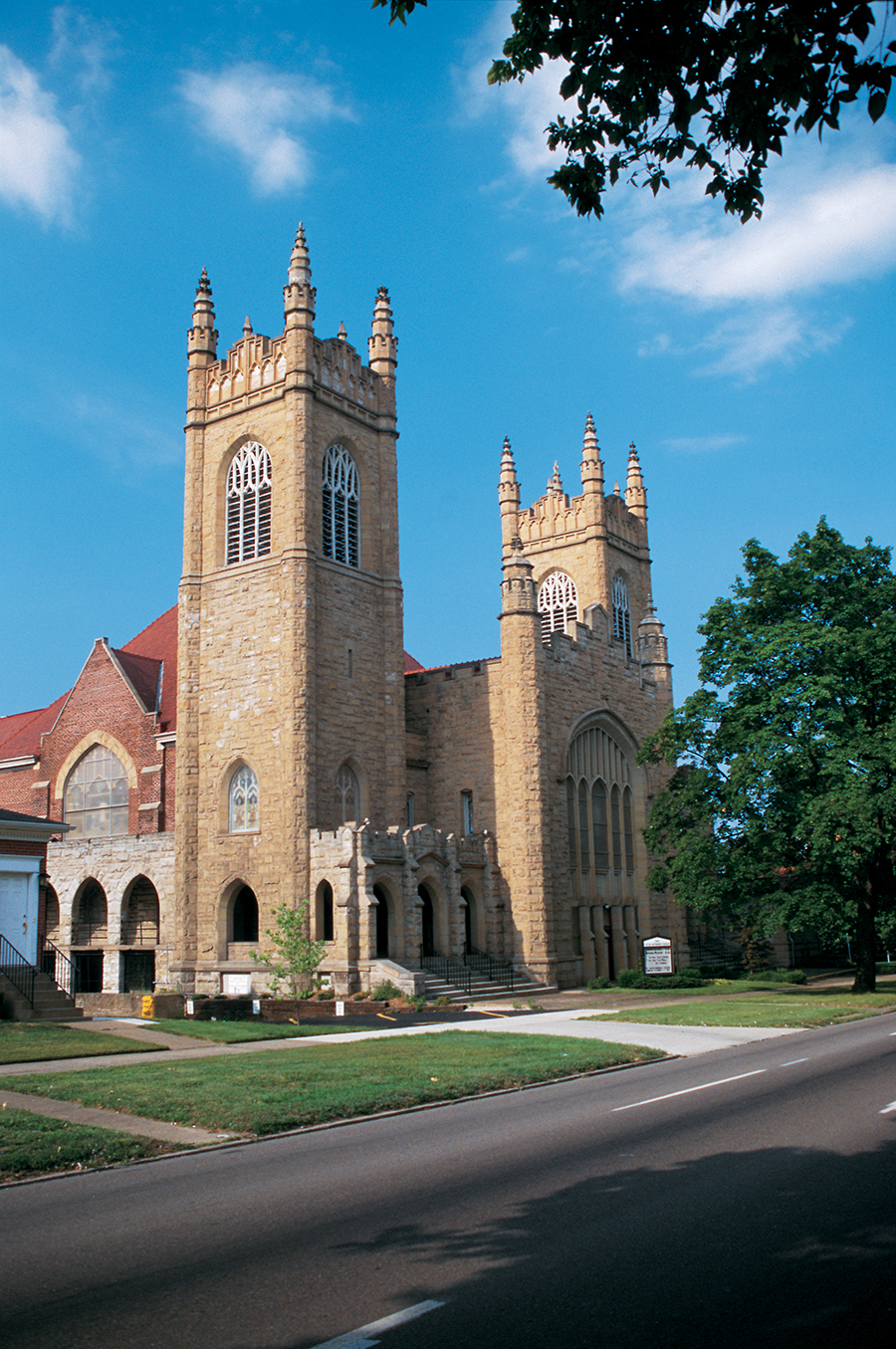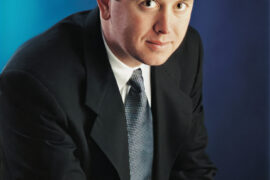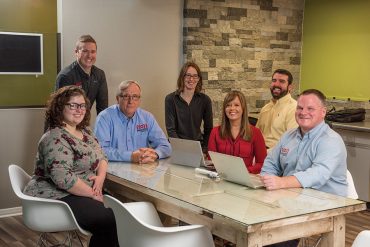Huntington’s many churches are a source of great pride to the community.
By Kevin Doran
HQ 21 | SPRING 1995
If you live in Huntington, or have in the past, you’ve probably heard “The Story.” You know, the one about there being more churches on Fifth Avenue than any other street in the country. I’ve also heard a version where the word “world” is substituted for “country.” And there is another account that says Huntington has more churches per capita than any city in the country, or was it the world? Regardless, every time I hear the tale it is told by someone who is speaking with great pride about the city’s churches, and it is usually attributed to either The Guinness Book of World Records, Ripley’s Believe It or Not, or one of “those record keeping books.” I checked with the people at Guinness and at Ripley’s, and they were unable to confirm that any of this is true. But, I’ve heard “The Story” so many times from so many people that I believe there must be something to it.
The fact is Huntington is a city of churches — just drive down Fifth Avenue sometime and I’ll bet you lose count. Open the phone book and you will see there is a church for almost every letter of the alphabet — from African Methodist Episcopal to First Wesleyan. And it wouldn’t surprise me if someday I look in the Yellow Pages and see that the categories X,Y,Z have been added as well.
There have been churches in the area for a long time. In fact, there were churches here even before Huntington was founded. Today the city has so many churches that it would be impossible to cover all of them fairly. Therefore, I have decided to write about what one pastor described to me as “the flagships” — the downtown clergies that gave birth to many of the other churches in the community. If there is a Methodist, Presbyterian, Episcopal, Baptist or Catholic church in the city, odds are it has roots in downtown Huntington.
First Presbyterian Church
When Huntington celebrated its centennial and there was so much talk about history, the people at First Presbyterian Church probably smiled. After all, First Presbyterian is older than the city by quite a few years. The church was founded in 1838 and is the mother church of eight or nine other Presbyterian clergies in the area.
Dr. Ernest Thompson has been Pastor since 1987 and says the church’s past is pretty remarkable.
“Even though I am not big into looking back, it’s not every church that has a 150 year history.”
Thompson has become somewhat of an expert on architecture, but not necessarily by choice. Because of their age, many of the downtown churches have had, or will have, major work done.
First Presbyterian underwent a $2 million renovation in 1990. The church is actually four buildings that have been tied into one. There were numerous levels and Thompson says that made it nearly impossible for the elderly or disabled to have access.
“We had a debate about the cost, but there was no choice. It just wasn’t safe. It would have been far cheaper if we just leveled the place and started from scratch.”
However, that wasn’t a realistic option either, because downtown real estate is at such a premium. Many of the churches are looking to buy the buildings next door for expansion and parking.
“Today,” Thompson says proudly, “the work is complete and this year the debt will be paid off.”
One look inside the sanctuary at First Presbyterian and you realize the church places great significance on preaching. There is a huge central pulpit surrounded by curved pews, and a balcony extends up the sides of the sanctuary, so wherever you sit you are close to the preacher. It’s easier to hear and make eye contact that way. Thompson says long Sunday sermons are not unusual, but you might be surprised by what else you would find at his church.
“I would hope they would find that we are friendlier than Presbyterians are reputed to be. We are supposed to be intellectual, wealthy and cold, and I think we scare off people because we wear coats and ties to church. But one of our strengths is that we really are a warm, friendly congregation.”
Fifth Avenue Baptist Church
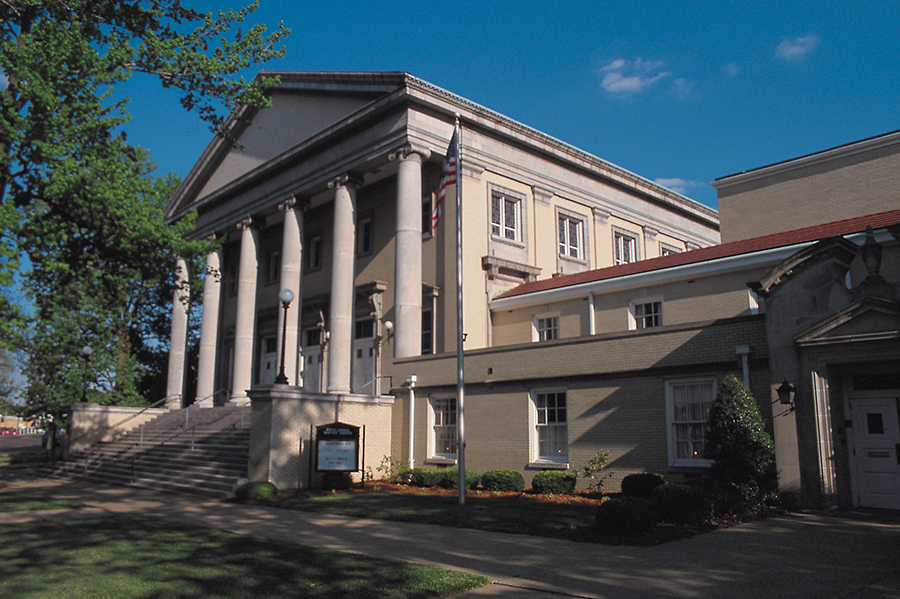
The first thing Pastor R.F. Smith says when I arrive at Fifth Avenue Baptist Church is, “Let’s take a walk.” We end up on the front steps, standing between the gigantic columns that make Fifth Avenue Baptist one of the most recognizable buildings in downtown Huntington. Smith is entering his 17th year as pastor, one of only a handful of pastors the church has had in its 123 year history. He explains the huge columns symbolize the church’s strengths which he defines as openness and love.
“I inherited a church that has a lot of openness. We have people with theological beliefs from A to Z, but everyone is open to hear what others have to say. We support and love each other no matter what, and it has always been that way.”
Smith calls Fifth Avenue Baptist “Camelot” and says, “There are a lot of churches in the world that just don’t touch this place.”
Anyone who has driven by Fifth Avenue Baptist knows it is a large church — gobbling up more than half a city block. The front steps lead you to a main sanctuary that will hold 900 people comfortably, 1,000 on holidays.
Behind the main sanctuary is an old auditorium that is truly unique. Smith refers to it as “The Shakespearean Theater” because it resembles the theaters of that time. The ceiling is 50 feet high, and two horseshoe-shaped balconies hang over the main floor. At ground level, large sliding oak doors can be raised to create an expansive, open meeting room. In the past it has been used for assemblies, but today the doors are mostly closed to create Sunday school rooms.
Smith acknowledges he has heard “The Story” but whether it is true or not, he says, “If Fifth Avenue and the churches of Huntington are not in a class by themselves, then it doesn’t take long to call the roll — because there just aren’t many towns that have these kinds of churches.”
Johnson Memorial United Methodist Church
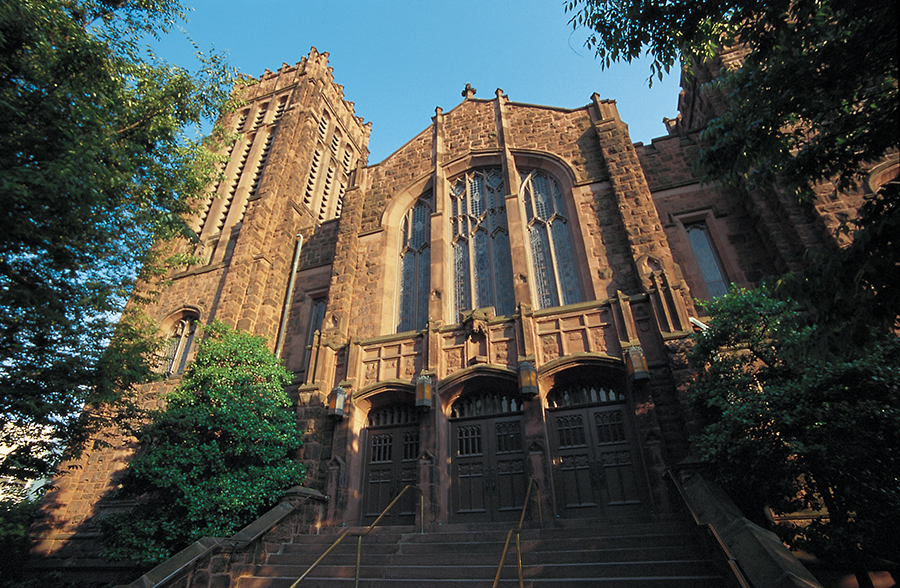
Dr. Emerson Wood from Johnson Memorial United Methodist is the dean of the downtown pastors — he has been at the church for more than 17 years. As we sit down to talk in his office he remarks, “You’ve probably heard ‘The Story.’”
“Yes,” I reply. “But can you tell me the source?”
“No,” he says, “But I’ve heard it many times. I do know Huntington is special. When you look at the different denominations represented in this downtown area, especially on Fifth Avenue, you’ll find that most of these churches are the ‘flagship’ churches.”
Johnson Memorial United Methodist’s roots can be traced back to a visit to the area in 1788 by Bishop Francis Asbury, the first Methodist Bishop in America. In 1892 the church was named in honor of the Rev. J.W. Johnson, who died while the church was being built at the present site. In the 1940s there were as many as 3,000 members.
“This church has stayed relevant and tried to minister to a changing community. When this was a 3,000 member church the city population was close to 100,000. Now we’re smaller but still trying to meet the needs of the community.”
Wood says his church has always had a strong ministry, both in preaching and music, but these days the focus is on children and younger families, specifically baby boomers.
“You try to see what the needs of the community might be, and develop programs to meet them.”
Johnson Memorial is a stately, older church that Wood comments, “looks almost like a fortress.” It was fashioned after the old European cathedrals and when you examine the architecture the words strength and stability come to mind.
But Wood explains you do not have to storm the walls to come inside.
“We want people to come in. They won’t find the formality and stateliness they might expect. Many people identify with this church because of the friendliness of the congregation.”
Trinity Episcopal Church
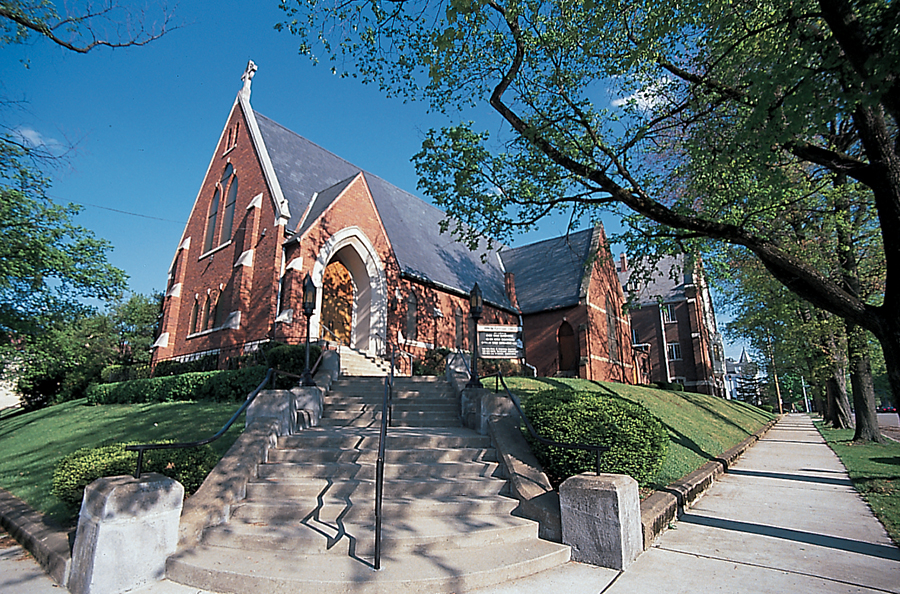
When I asked Dr. Paul Roberts of Trinity Episcopal Church if he had heard “The Story,” he replied, “No, but Fifth Avenue in Huntington could easily be renamed ‘Church Street.’”
Roberts says it is healthy to have churches downtown because they are an attraction and promote growth. He says the downtown location also helps Trinity Episcopal with its ministry.
“Trinity Episcopal has a history of leadership and community outreach. It is a church that has a lot to offer.”
Several organizations like “Hospice of Huntington” and “Contact” were born at Trinity Episcopal, and the church also runs a food and clothing pantry.
Trinity Episcopal has a distinct appearance. The architectural style can best be described as late 19th Century Village Gothic. The sanctuary is cruciform — shaped like a cross. Looking in from the back of the church (at the foot of the cross) your attention is directed toward the altar which is the center of church life. Roberts says that is no coincidence.
“The altar is the place where we offer ourselves to God and He offers himself to us. It is the place where we come together to be fed so we can go out and minister.”
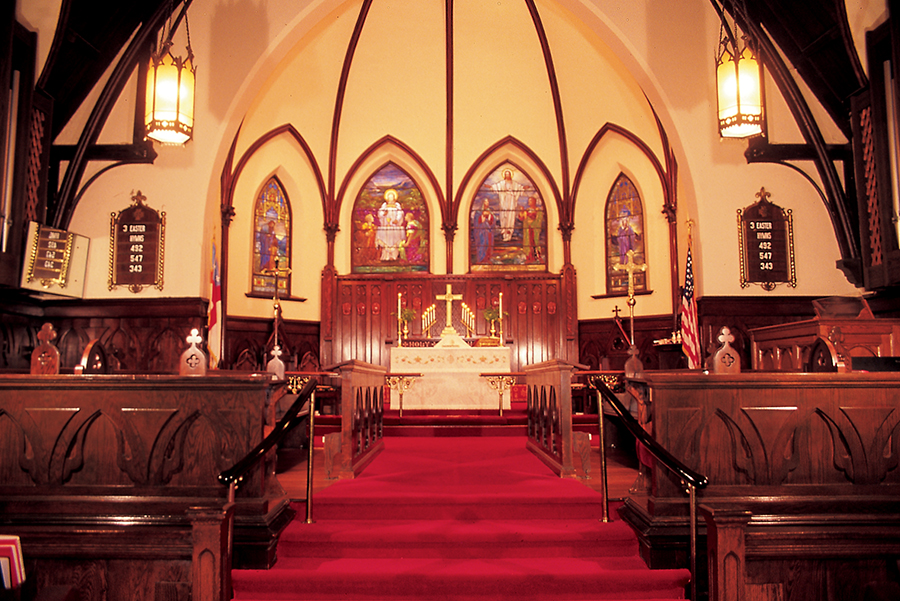
Trinity Episcopal is a stunning church, especially its famous stained glass windows. Each is one of a kind, built by either the world-renown glass artisan Louis C. Tiffany or by the Willett Glass Studio.
“Each window has its own story, some have multiple stories, and they are all memorial windows.”
Roberts says to learn about Trinity Episcopal’s history and liturgy, all you have to do is study the exquisite stained glass windows.
St. Joseph Roman Catholic Church
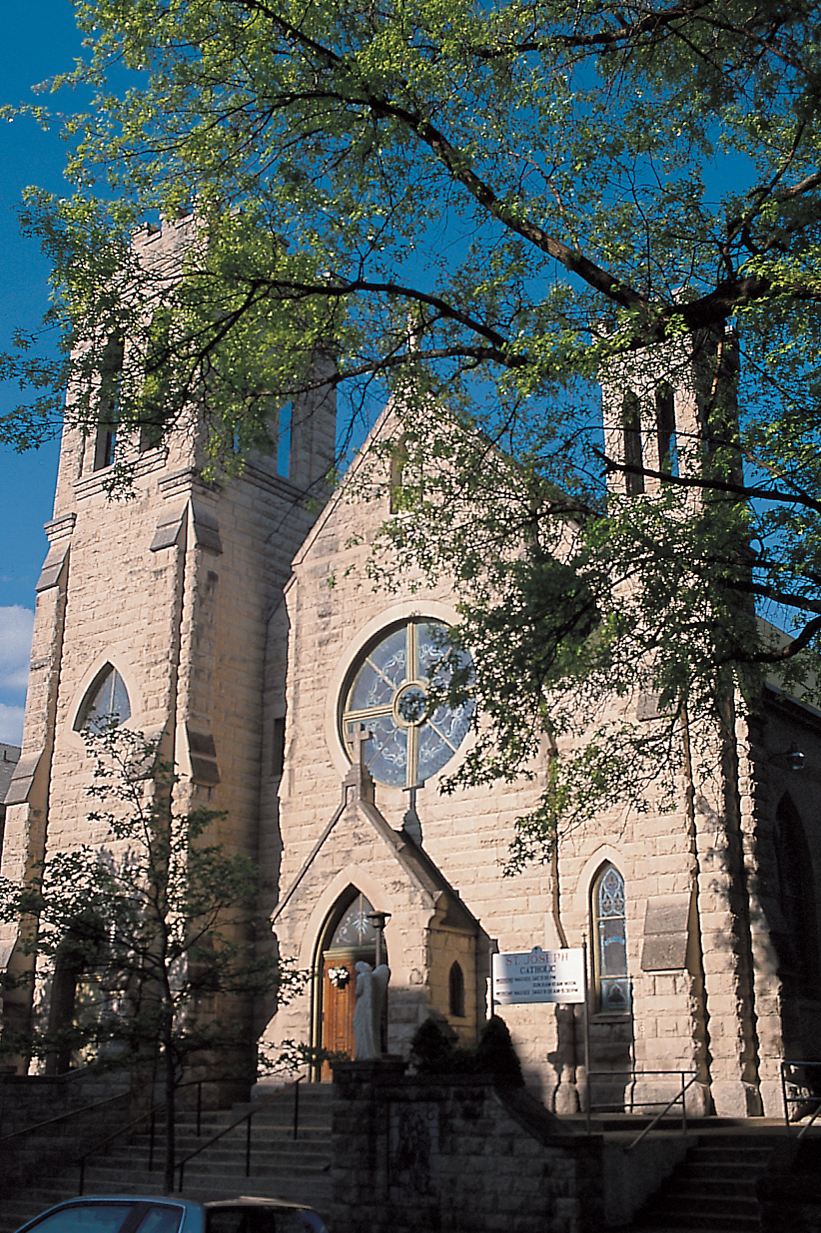
The first mass at St. Joseph Roman Catholic Church was held in a converted tool shed at the corner of Eighth Avenue and 12th Street in 1872, one year after Huntington became a city. In the 1880s a flood drove the church to higher ground, and today St. Joseph looks much the same as it did at the turn of the century. Rev. Frederick Annie says the sacramental rituals of the Catholic Church make St. Joseph unique among its downtown neighbors.
“Christianity is made up of different religious traditions, and the churches in downtown Huntington are representative of that. Each has something really unique to offer.”
St. Joseph has a strong commitment to education. Shortly after the church was founded it opened a school. Today, students of all religious denominations attend classes at the grade school and high school.
“Our parish church may be a little smaller than the others downtown, but that’s because historically the majority of our resources have gone into education.”
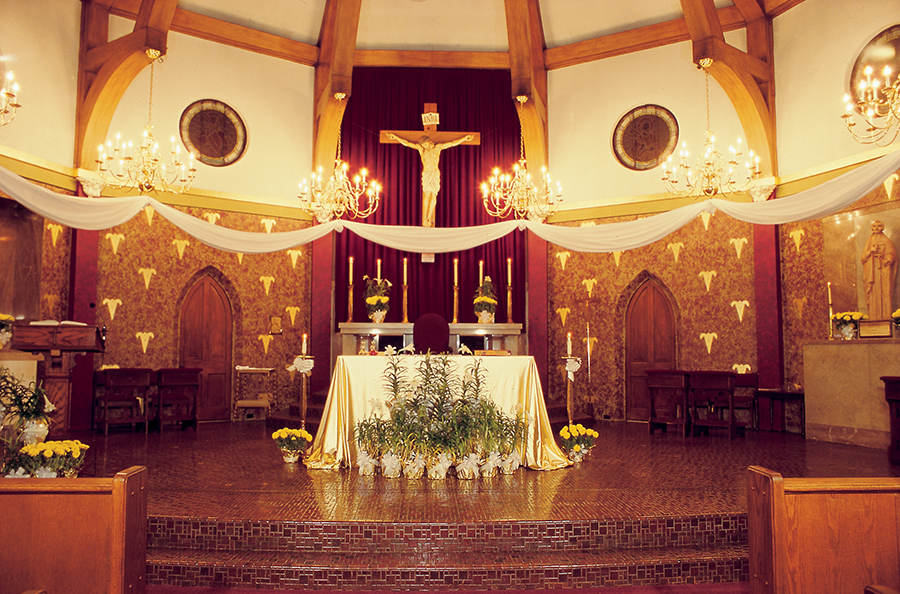
But Annie says the size of the building isn’t as important as what goes on inside.
“Worship seems more intimate at St. Joseph. Our church is empty without its people.”
As for the future, Annie says, “That’s one of the things we’re working on right now. What will our future be like as we move into the 21st century? What will our future be downtown?”
Annie is looking for answers to those questions and explains, “The community changes a little bit with every generation, and St. Joseph and its neighbors downtown face some big challenges.”
B’Nai Sholom Temple

The B’Nai Sholom Temple (formerly known as the Ohev Sholom Temple), located at 949 Tenth Avenue, is both architecturally and historically significant to the city of Huntington.
The Ohev Sholom Congregation was organized in 1887, just 15 years after the incorporation of Huntington, and many of its members were prominent in the early political and civic development of the city. The Congregation outgrew its original facility at Fifth Avenue and 10th Street by 1919, and the lot at the corner of 10th Street and 10th Avenue was bought for the purpose of erecting a new synagogue.
The new facility was designed by the prominent architectural firm of Meanor and Handloser which also designed the Coal Exchange Building and the First National Bank in Huntington, among others.
The building is constructed primarily of brick, with some terra cotta ornaments. Sheltering the sanctuary is an impressive square dome, sheathed in green terra cotta tile. The temple is eclectic in style, with strong Byzantine and Romanesque influences. The facade facing north on 10th Avenue features an elaborate rose stained glass window, and three arched doorways serve as the Temple’s entrance. Like the rose window, the arches are ornately decorated.
The interior of the Temple is dominated by a large and impressive sanctuary, rising some 60 feet to the dome. The sanctuary’s dramatic lighting is enhanced by 12 beveled clearstory windows positioned just below the dome and through the 16 stained glass windows, depicting Biblical scenes, designed by the Blenko Glass Company. Details in the sanctuary include walls decorated with impressive plaster and terra cotta ornamentation, a large central chandelier and metal wall sconces.
The sanctuary is also home to a Skinner pipe organ, and pipes located behind screens in all four corners are powered by hidden wind trunks of 10 inch diameter.
B’Nai Sholom Congregation, which today numbers more than 100 families, was formed in 1975 with the merger of the congregations of Ohev Sholom Temple and B’Nai Israel Synagogue (formerly located at Ninth Street and Ninth Avenue).
Spirit of Cooperation
Huntington’s downtown churches face similar problems and opportunities and they have discovered it is easier and more productive to work together than separately.
So instead of focusing on their differences, the downtown churches are looking at the things they have in common. Besides holding ecumenical services on holidays, the churches are also cooperating to tackle such problems as poverty, homelessness and hunger.
When I asked Dr. R.F. Smith of Fifth Avenue Baptist about these issues, he remarked, “I’ve never been in a town that has the camaraderie we have among ministers here. I really feel those of us in Huntington of different denominations have more in common than a lot of our sister churches have with their neighbors.”
Dr. Emerson Wood of Johnson Memorial United Methodist agrees, and says he has never seen anything like Huntington in his experience.
“You never see the humanism that you have here. The cooperation is unique and it has always been that way to an extent. We all minister to the same people, the only difference is the denominations. We see ourselves as complementing each other, not as competition.”
Dr. Paul Roberts of Trinity Episcopal Church credits the pastors who have served the community over the years for creating an atmosphere of support.
“In spite of our differences, the tolerance for other viewpoints seems to be higher in this community than in many others. There is an acceptance of others and it has been that way for a long time. I think it’s just part of the history of Huntington.”
Dr. Ernest Thompson of First Presbyterian Church agrees.
“I think it works for three reasons. One, our common faith in Jesus Christ. Two, we have common challenges. And three, a common location. All the individual churches trying to work separately aren’t as effective as all of them working together.”
An Invitation
I wish the people of Huntington could discover the marvelous qualities of the downtown churches and I know how it could be accomplished. Why not have an open house at each church once a year and invite the entire community to attend? Local residents would be surprised to see what lies behind some of the doors they pass by regularly. It has never been done before, but as one of the pastors I spoke with jokingly remarked, “We have an open house every Sunday, all you have to do is show up.”
But this would be different. Each church could open its doors for a few hours and invite the community to tour these magnificent structures.
How many Huntingtonians have peeked inside the resolute walls of Johnson Memorial to admire the beautiful sanctuary, imagined what lies beyond the stately columns of Fifth Avenue Baptist, listened to the wonderful acoustics of the “Round Room” at First Presbyterian, walked the sacred Stations of the Cross at St. Joseph Catholic, or strolled through the Memorial Garden at Trinity Episcopal?
Huntington has been blessed with a church community whose rich history and diversity is unique, and that is a fact you don’t have to check with the people at Guinness or Ripley’s.

